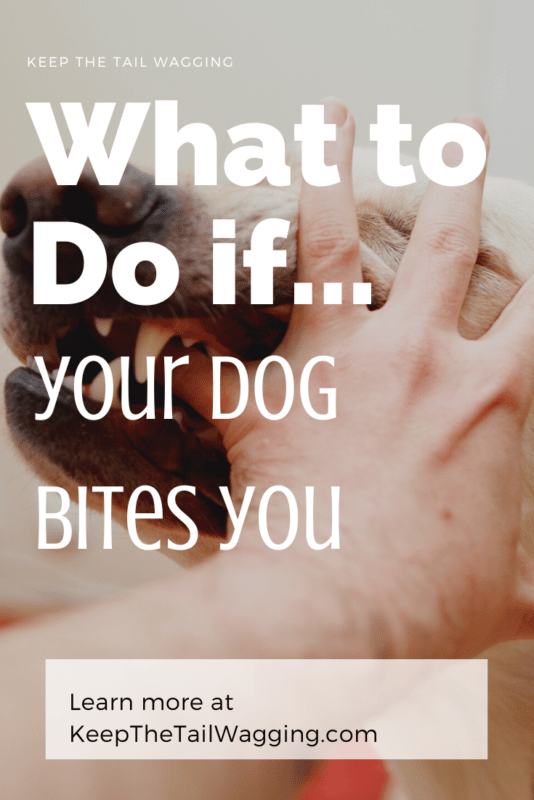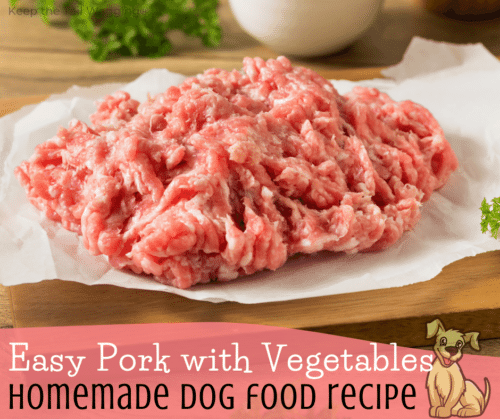Keep the Tail Wagging is supported by pet parents. I occasionally earn a commission (at no additional cost to you) when you click through an affiliate link to one of my favorite products. Thank you for your support. Read More
If you are having behavior challenges with your dog, please seek the help of a qualified, positive-based dog trainer. I am a dog nutrition blogger, not a dog trainer, and I cannot offer advice or recommendations.
Years ago, Rodrigo bit me. It was my fault. He was focused on a bowl of ice cream Johan was holding, and I tried to sneak around him, and he reacted and bit me in the face. It was a warning nip; there was no broken skin, and I was not
- I backed away, but not too quickly because I didn't want to startle him again.
- I made eye contact with Johan and shook my head because I didn't want him to punish Rodrigo.
- I stood up and walked out of the room.
I have no idea if that was right or wrong, but I had to remove myself from the situation to get a hold of myself because I was having a human moment, and all I could think was, “My baby bit me!” I pulled myself together and became responsible pet parents again.
When I returned to the room, Rodrigo was nervous and wouldn't look me in the eye. It broke my heart. I hugged him and told him it was okay, he licked my face, and then we all turned in for the night.
When Your Dog Bites You
What amazed me about getting bit by my dog is that I was able to quickly assess the situation. I understood what happened. My heart breaks for dogs kicked out of the house, abused, or surrendered to the shelter because of a similar situation. Someone I know encouraged a friend to have her dog put down because he was nipping at her. Why not call a dog trainer first?
I did a little Google research and found five reasons dogs bite…
1 – POSSESSIVENESS– guarding property, toys, and food can be common with some dogs.
2 – FEAR AND ANXIETY – if a dog is afraid, he will lash out to protect himself.
3 – PAIN – dogs may nip or bite when they're in pain to let us know, “that hurts!”
4 – MATERNAL – some dogs may be guarding/protecting their new litter.
5 – PREY DRIVE – if a dog has identified something they want, they may bite/nip to keep others away.
Over the years, several of my dogs have nipped at me lightly as a warning. It's usually due to pain or fear. No one likes to have their nails trimmed (but it must be done), and Rodrigo doesn't like being brushed (he gets a lot of knots in his coat). I've used these experiences to learn how to trim their nails without cutting the quick, and I purchased better grooming tools.
Dog Bite Warnings
Yes, there were warnings. Johan noticed that Rodrigo bared his teeth to his sister. Looking back, I should have removed him from the room
Other warnings (that we didn't experience) that dog parents should look for are ears back against the head, hackles (hair along the back, rear, and/or spine) raised, excessive yawning, and intense eye contact or side eye/whale eye (when you see a lot of the white of the eys).
I find it suspect when someone tells me that the dog bit someone “out of the blue” without warning. I believe we humans fail to recognize and identify our dogs' warning signs.
How to Prevent Dog Bites
None of my dogs have bitten anyone, but that doesn't mean it can't happen. As their owner (guardian, pet parent), it's my job to protect my dogs; by doing so, I can reduce the risk of a dog bite.
- Know your dog's body language so that you can ward off aggression or stress before it gets that far.
- Train your dog commands like “leave it” to know that whatever they want isn't for them.
- If your dog tends towards regular aggression, you might want to limit aggressive games like tug-of-war.
- Don't put your dog in stressful situations.
- Socialize your dog by introducing them to different locations, situations, people, sounds, and other dogs.
- Be your dog's advocate and set boundaries when needed.
Does Raw Feeding Make Dogs Aggressive?
There are many myths about raw feeding, one being that eating raw meat and blood makes dogs feral and violent. This is not the case. When Rodrigo nipped at me, he was still eating kibble. If we're going to blame diets for our dogs' behavior, I'm more apt to blame kibble due to the high carbs, and subsequent blood sugar spikes dogs experience when fed dry dog food.
Dogs are predatory carnivores that naturally have a taste for raw meat because it's biologically appropriate for canines. Feeding a species-appropriate raw diet doesn't make our dogs feral or bloodthirsty. A raw food diet simply honors our dogs' true nature and nutritional needs.
So, no, raw feeding doesn't make dogs aggressive.
Read More About Raising Dogs
- 3 Reasons Why Dogs Put Their Paw on Their Owner
- The Ultimate Guide to Choosing the Perfect Stuffed Dog Toys
- Is it Possible to Prevent Littermate Syndrome in Puppies?
- How Preventing Strangers from Petting My Dogs Improved Our Walks
- Books to Help Dog Owners Feed Their Dog Better
Due to the number of people leaving comments asking for advice, I have closed the

















